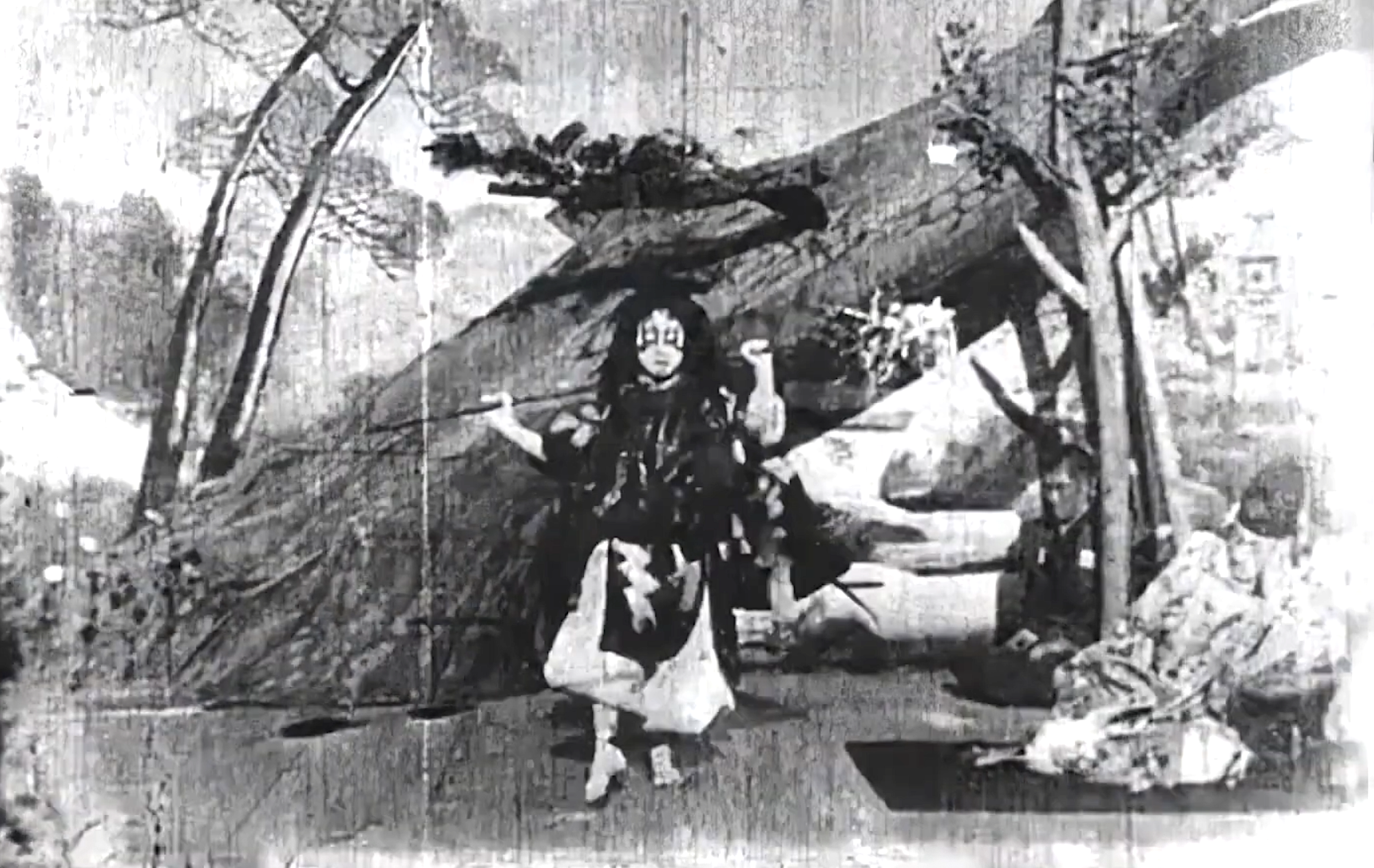
"At first, film sim­ply record­ed events: a man walk­ing across a gar­den, work­ers leav­ing a fac­to­ry, a train pulling into a sta­tion. The medi­um soon matured enough to accom­mo­date dra­ma, which for ear­ly film­mak­ers meant sim­ply shoot­ing what amount­ed to stage pro­duc­tions from the per­spec­tive of a view­er in the audi­ence. At that stage, we could say, film still had­n't evolved past sim­ple doc­u­men­tary pur­pos­es, hav­ing yet to incor­po­rate edit­ing, to say noth­ing of the oth­er qual­i­ties we now regard as char­ac­ter­is­ti­cal­ly cin­e­mat­ic."
"Shot in 1899, Momi­ji­gari depicts near­ly four min­utes of a kabu­ki play involv­ing Onoe Kiku­gorō V and Ichikawa Dan­jūrō IX, two famous mas­ters of the form at the time. The idea was to pre­serve a record of their pres­ence on stage, no mat­ter how hap­haz­ard­ly or for how short a time, before they shuf­fled off this mor­tal coil. It cer­tain­ly was­n't too soon: both men would die in 1903, the year of the film's first exhi­bi­tion."
"No fan of West­ern moder­nity, Dan­jūrō had stip­u­lat­ed that it be shown only after his death, but in the event, it was screened for the pub­lic in his place at a per­for­mance at which he was too sick to appear, which extend­ed to a longer run in hon­or of Kiku­gorō's recent death. Like its West­ern his­tor­i­cal equiv­a­lents, Momi­ji­gari depicts a the­atri­cal work."
Early cinematic practice initially recorded simple events such as people walking, workers leaving factories, or trains arriving. Filmmakers then adapted the medium to drama by filming stage productions from an audience viewpoint without editing or other cinematic techniques. The limitation was technical rather than cultural, exemplified by Momi­ji­gari, the oldest extant Japanese film, shot in 1899. Momi­ji­gari preserves nearly four minutes of a kabuki performance featuring Onoe Kiku­gorō V and Ichikawa Dan­jūrō IX and aimed simply to record their presence on stage. Both actors died in 1903; screening arrangements reflected Dan­jūrō's condition and Kiku­gorō's death, and the film aligns with Western practices in depicting theatrical works.
Read at Open Culture
Unable to calculate read time
Collection
[
|
...
]